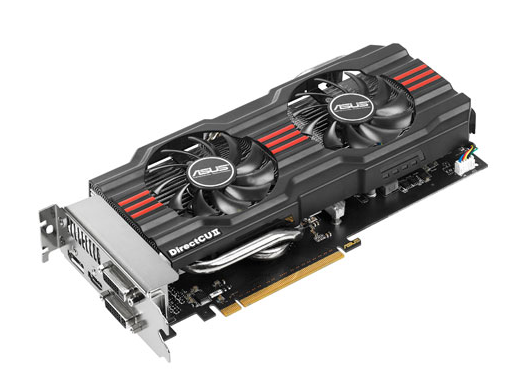Nvidia GeForce GTX 660 2GB
The GTX 660 is based on the GK106 Kepler
GPU, rather than the GK104. This means a lower transistor count and die size with
the increased chip yields also making for a lower price tag. As such, the GTX
660 2GB sits in the very competitive sub-$321.5 market, where Nvidia had so
much success with the GTX 560 Ti 1GB.

Nvidia
GeForce GTX 660 2GB
The GK106 GPU shares the same basic
architecture as the GK104 GPU used in higher-spec cards, with the card split
into GPCs, which in turn are split into SMs, each containing a
tessellator-equipped polymorph engine, 192 stream processor and 16 texture
units. The GK106 GPU boasts a trio of GPCs, two equipped with a pair of SMs,
and the third with a single Sm. This makes for a total of 960 stream processors
and 80 texture units for the GTX 660 2GB. Of course, these reductions also
enable GK106 to hit a lower transistor count of 1.54 billion and a die size
221mm2.
Meanwhile, the memory interface has been
ported directly from the GTX 660 Ti 2GB, with a trio of 64-bit memory
controllers making for a 192-bit memory interface. The GTX 660 2GB sports the
same memory frequency of 1.5GHz (6GHz effective) as its more expensive sibling
too, meaning that both cards have a peak memory bandwidth of 144GB/sec. thanks
to its lower TDP of 140W, though, the GTX 660 2GB requires just a single 6-pin
PCI-E power connector.
The GTX 660 2GB is also the lowest-priced
Nvidia’s GPU to benefit from GPU boost, boasting a base clock of 980MHz, a
guaranteed boost clock of 1,033MHz and a peak boost frequency of 1,078MHz.

Nvidia
GeForce GTX 660 2GB
The card’s Unigine benchmark score of 1,267
is a little behind the 1,306 of the HD 7870 2GB, but in the rest of our game
tests, the GTX 660 2GB matched the HD 7870 2GB’s minimum frame rates at 1,920 x
1,080. The GTX 660 2GB showed a noticeable lead in Skyrim at 1,920 x 1,080 with
8x AA, thanks to minimum frame rate of 61fps compared to the HD 7870 2GB’s
56fps in the same test, but then trails slightly in The Witcher 2 at the same
resolution. At 2,560 x 1,600, both cards achieved very similar frame rates,
although performance isn’t enough to remain playable without lowering the
settings.
Conclusion
There’s little tangible difference between
the Radeon and the GTX 660 2GB. Both offer excellent frame rates at 1,920 x
1,080 in all four of our test games at their highest settings, before losing
pace at higher resolutions. This means that not only are current games
playable, as they are on cheaper cards, but there’s also comfortable headroom
for future games. Marginally cheaper than the HD 7870 2GB, the GTX 660 2GB is
our midrange card of choice.
|
Information
A mid-range champ as fast as an HD 7870
2GB, but cheaper
On target: Plenty of performance at 1,920
x 1,080; matches the HD 7870 2GB for less money
Collateral Damage: High-resolution gaming
not possible at maximum detail
Typical street price: $287.9
Manufacturer: www.nvidia.com
Scores
1920 speed: 13/20
2560 speed: 11/20
5760 speed: 2/5
Value: 47/55
|